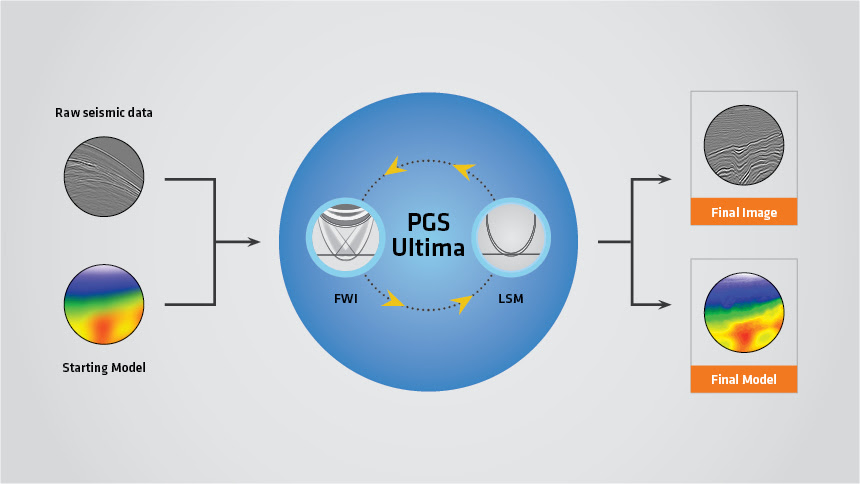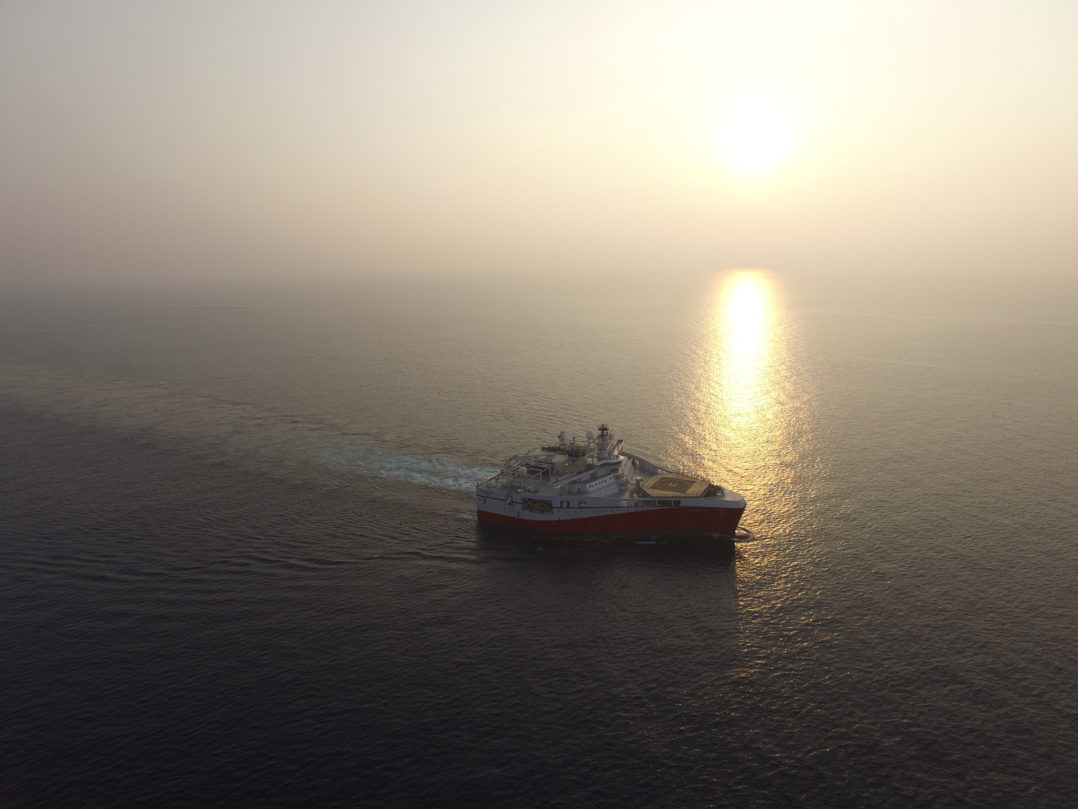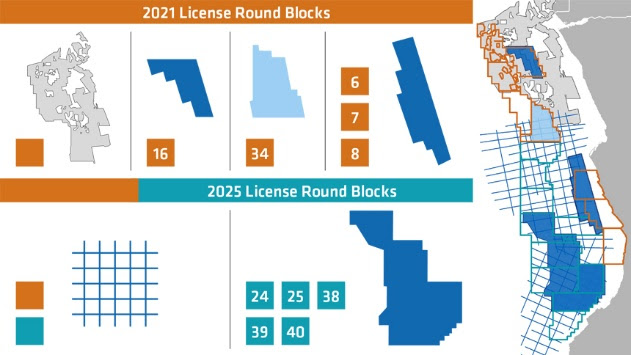At IMAGE21, PGS has presented a “game-changing” realisation of several decades of industry ambition with PGS Ultima as a move away from traditional sequential processing to a simultaneous inversion combining velocity model building and least-squares imaging.
PGS said PGS Ultima would deliver accurate models and images faster, as the simultaneous inversion resolves both using the same raw seismic data. Ultima can bypass most processing in a seismic sequence because raw seismic data is used as input and has the potential to reduce the time taken for an imaging sequence by up to 50%.
Bertrand Caselitz, Imaging Chief Geophysicist said: “PGS Ultima has the potential to transform seismic processing, enabling accelerated delivery of high-quality final products and breaking down the current cascaded approach to seismic imaging. It will allow our customers more time to analyse the data and therefore reduce their risks in field exploration, development, or production.”
Simultaneous Inversion Speeds up Processing
Full waveform inversion (FWI) is normally run at the beginning of a processing sequence and is the main tool for velocity model building. Least-squares migration (LSM) requires an accurate velocity model, so it happens much later in the flow. When applications rely on the products of earlier steps we end up with time-consuming cascaded workflows.
The simultaneous nature of PGS Ultima means FWI and LSM are now performed in a single framework. It uses raw seismic data, models the full acoustic wavefield, and outputs accurate velocity models and reliable reflectivity.
Suitable for Use on Any Data
PGS Ultima can be used on any data; there are no limitations on acquisition geometries to get accurate and deep models, as the code uses both reflections and refractions.
Different Approach to a Long-standing Problem
PGS Ultima uses a unique implementation of scale separation, so there is no parameter leakage, and the velocity model and reflectivity are not contaminated by each other, unlike many current industry approaches.
Only limited processing is needed for PGS Ultima, the input required is a starting velocity model and raw data saving time on preprocessing steps like demultiple, deghosting and designature. By doing the inversion for velocity and reflectivity simultaneously not only does this save time but it can deliver an even better image.





